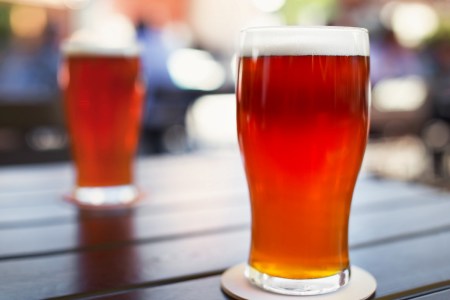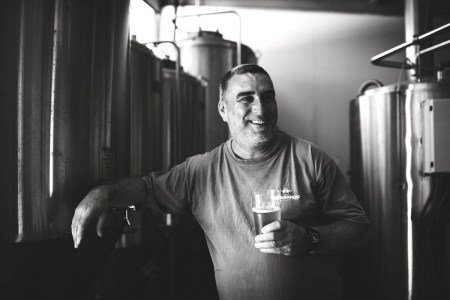
With so many variations pushing the boundaries of what an IPA is, it’s time to look at their origins a little more closely with Jeremy Good from Cowaramup Brewing who also delivers both all grain and extract recipes for his take on a classic version.
Find our other Recipe of the week articles here.
The IPA began life back in old Blighty as ale was being sent overseas to soldiers and customers. It started out as a regular ale, which in relation to the darker porters and northern brown ales that were gaining popularity at the time, this “pale” ale began to really take hold.
It was not long before it was being sent off to troops in India via the East India Trading Company that it really became famous. The ale was in great demand with brewers all over the UK exporting to India and to the colonies, and certain brewers were playing around with different variations to make theirs stand out.
It became evident pretty quickly that beers with a higher ABV and a higher ratio of hops arrived on the other side of the world in much better condition, and so the India Pale Ale was born.
Do yourself a favour, and grab a copy of the IPA book by Mitch Steele for a much more in-depth story. It is a great read but get a pint of IPA ready for the gripping tale!
Tradition
By now most of you will have realised I’m an old school brewer, who loves nothing more than getting a pint of good old ale. Pretty much all of my family were publicans in England and I spent much of my time in a pub as a kid (and adult!).
I was brought up and worked in pubs in the UK and I just love those original ales. There is nothing quite like a pint of fresh IPA, pulled through a hand pump in a low ceiling pub. You just know that the heritage and history of these UK ales are rich and stretch back through time and you feel nostalgic standing there pulling one for a punter. Each pull on the handle is poetry in motion!
There are so many breweries in the UK doing traditional IPAs so hit up the Campaign for Real Ale’s (CAMRA) website for more details.
The wonderful rich toffee and caramel malt flavours, with that beautifully balanced earthy bitterness which the UK hops bring – like Fuggles, East Kent Goldings, Northdown, Challenger and others.
As I sit here now punching away on the keyboard, I am enjoying a pint of Jeremy Good’s Cowaramup Brewing IPA. Jez and I share the same views on UK ales and THIS is an IPA!
Cowaramup Brewing are an award-winning, family-owned and run brewery in the Margaret River region in WA and this original English IPA is a thing of beauty. Rich with toffee and marmalade malt and wonderfully bitter with a moderate hop aroma – it doesn’t get much better and it’s a far cry from modern US versions. Don’t get me wrong, I love a punchy, hoppy US-style IPA as much as the next drinker, but every time I have one I can’t help think about where this beer came from and what the original IPAs would have been like.
I think it is important to know the roots of these styles that have been altered so much from their original intended beer. I am all for moving with the times, but let us not forget where they came from.

Brew day
Today we are brewing a stock standard UK IPA with Jeremy (pictured) and we thank him for his information and sharing his recipe with us all.
If you can get some floor malted Maris Otter or Golden Promise malt then do so as this adds to the complexity of the malt character. If not, just crack on with regular Ale malt.
Water, as with all styles of beer and brewing, is fairly important for an authentic IPA so aim to get your water to London specs. Jeremy likes to do a 75 minute boil to promote Maillard reactions and to get some marmalade malt tones going on. He dry hops with Mystic, an English hop which gives a wonderful blackcurrant, orange and passionfruit aroma.
“Use quality ingredients and don’t rush things. Take your time,” Jeremy said. “Ensure a mash rest temp of 66°C and get a good rolling boil to get those biscuity toffee characteristics from the crystal malt.
“Ferment at 21°C through to final gravity, and enjoy the fruits of your labour – a truly historic ale.”
So, what are you waiting for, get your tweed cap on, roll your sleeves up and embrace this wonderful beer for what it is – and was. Cheers!
The Old Blighty IPA
All grain (expected figures)
OG: 1.058
FG: 1.012
ABV: 6%
IBU: 40
Volume: 23 litres
Ingredients
5.8kg Maris Otter or Golden Promise malt
250g Caramel/Crystal malt
150g Torrified Wheat
119g East Kent Goldings hop pellets
30g Fuggles hop pellets
100g Mystic hop pellets
SafAle s-04, Wyeast 1028 London Ale yeast, or similar
Method
- Mash all grains at 66°C for 60 minutes.
- Sparge and transfer to kettle, and bring to boil.
- Once boiling add 66g EKG hops for a 75 minute boil.
- At flameout, add 53g EKG and 30g Fuggles hops, and whirlpool for 10 minutes.
- Transfer to the fermenter and cool to 21°C, then pitch yeast.
- Maintain ferment temp at 21°C.
- Once primary fermentation ceases, dry hop with 100g Mystic hops.
- Once FG stabilises, keg or bottle condition for four
weeks minimum.
Extract with specialty grains (expected figures)
OG: 1.058
FG: 1.012
ABV: 6%
IBU: 40
Volume: 23 litres
Ingredients
4.6kg Pale liquid extract
250g Caramel/Crystal malt
150g Torrified Wheat
119g East Kent Goldings hop pellets
30g Fuggles hop pellets
100g Mystic hop pellets
SafAle s-04, Wyeast 1028 London Ale yeast, or similar
Method
- Steep cracked grains in 5 litres of 70°C water for 60 minutes, then drain.
- Slowly dissolve the extract in 5 litres of water along with the 5 litres of wort from mini mash whilst bringing to the boil.
- Once boiling add 66g EKG hops for a 75 minute boil.
- At flameout add 53g EKG and 30g Fuggles hops, and whirlpool for 10 minutes.
- Add fresh clean water to a volume of 20 litres. Add hot or cold water to reach 23 litres and 21°C.
- Transfer to the fermenter, check the temperature then pitch yeast.
- Maintain ferment temp at 21°C.
- Once primary fermentation ceases, dry hop with 100g Mystic hops.
- Once FG stabilises, keg or bottle condition for four weeks minimum.
This recipe appeared in a previous issue of Beer & Brewer. To access multiple recipes every issue, from pros and homebrewers alike, subscribe to our magazine here.

